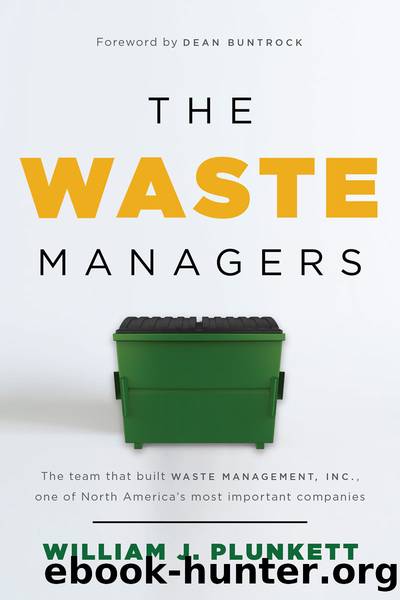The Waste Managers by William J. Plunkett

Author:William J. Plunkett
Language: eng
Format: epub
Publisher: Republic Books
Published: 2022-04-15T00:00:00+00:00
SURVEYING FOR GARBAGE
The survey teams had to learn how many tons of waste needed to be collected every day to decide how much equipment was needed. They found the garbage reflected the society: Most residents lived in small apartments with small refrigerators in high-rises. They bought only fresh food required for a short time and discarded food scraps, making their garbage heavier, full of âwetâ waste. They had little packaging as most cardboard was scavenged.
âIt was very common for a family to buy a dinner with the vegetables and the salads and that kind of stuff that day, throw it out that night, and buy another for the next day,â Debes said. âThe garbage was very green.â Hog farmers surrounding the city even had permits to pick up the garbage from restaurants in the central business district and use it to feed their hogs.
Many of the buildingsâ front doors faced the streets. The more modern residences had eight-to-eighteen-story high-rises with upwards of 120 apartments. There could be one 100 doorbells in them, too many and too many blocks to count. For the survey team, the small apartments were a clue for waste generation that the residents would not contribute as high a volume of waste.
Residents would dispose of their waste in small bags placed into baskets attached to bicycle stands. The baskets were a few feet above the pavement to prevent rodents from getting at them. Dogs, however, often found their way into the bags. Sometimes residents would just bring their waste to an intersection and leave it there to pile up and be collected days later. Larger buildings had compactors installed that replaced incinerators. The compactors packed up to two hundred pounds of waste into plastic tubes that were pitched into trucks and disposed of at CEAMSE sanitary landfills. The fewer incinerators meant clearer skies.
Debes created a form to record the volume estimates. The existing collection system was not as efficientâit had been developed as a government make-work project designed to employ as many people as possible.
The survey teams paired up with and were aided by a group of about twenty medical students who joined the effort, serving as translators and often, city guides at night. âThey were invaluable,â Debes said. âNot only did they know the language; they knew the city. If we wanted to go to a certain area, they could get us there in the quickest way.â
The team carried special passports, the result of the Argentinesâ efforts to bring order during a combustible time when nerves were raw and identities needed to be clear. They also carried letters identifying them as government contractors and referring any people who might stop them to the mayorâs office. One crew member was detained, but the right papers and quick-thinking team members retrieved him. The papers were âa get-out-of-jail-free card,â Debes said.
During the midpoint in the survey process, the team came across a critical document while in conversation with local authorities. The document contained the municipalityâs 1970 census data and
Download
This site does not store any files on its server. We only index and link to content provided by other sites. Please contact the content providers to delete copyright contents if any and email us, we'll remove relevant links or contents immediately.
| Biographies | Company Profiles |
| Economic History |
Pale Blue Dot by Carl Sagan(4001)
The Rules Do Not Apply by Ariel Levy(3906)
Goodbye Paradise(2963)
Delivering Happiness by Tony Hsieh(2922)
Liar's Poker by Michael Lewis(2812)
Into Thin Air by Jon Krakauer(2701)
Purple Cow by Seth Godin(2698)
Ogilvy on Advertising by David Ogilvy(2682)
Rogue Trader by Leeson Nick(2473)
The Airbnb Story by Leigh Gallagher(2370)
The Social Psychology of Inequality by Unknown(2311)
The Mind Map Book by Tony Buzan(2082)
Six Billion Shoppers by Porter Erisman(1999)
Bossypants by Tina Fey(1987)
All the President's Men by Carl Bernstein & Bob Woodward(1962)
Claridge's: The Cookbook by Nail Martyn & Erickson Meredith(1962)
Master of the Game by Sidney Sheldon(1881)
Alibaba by Duncan Clark(1755)
Wild Ride by Adam Lashinsky(1658)
